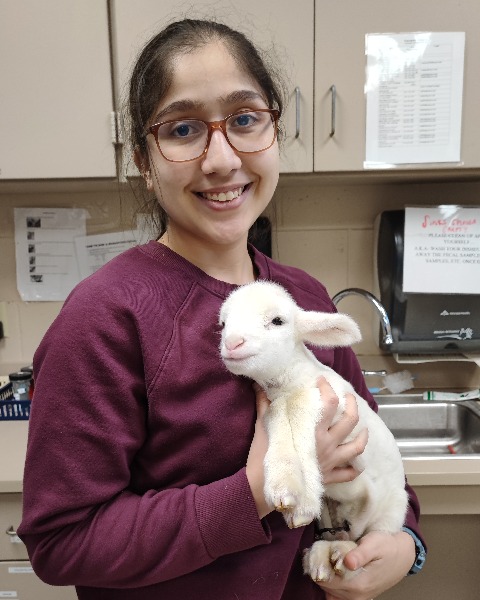Food Animal
Category: Research Abstract - ePoster
(F11) Prognostic Indicators of Outcome for Non-ambulatory Beef Cattle Presented to Two Referral Hospitals
Thursday, June 15, 2023
6:00 PM - 7:00 PM ET
Location: Solutions Center Poster Park - Poster Stand

Diana M. Perez-Solano, DVM (she/her/hers)
DVM, Food Animal Rotating Intern
Auburn University College of Veterinary Medicine
Auburn, Alabama, United States
Research Abstract – ePoster Presenter(s)
Abstract: Background - Diagnosis and treatment of non-ambulatory beef cattle is challenging, and scientific reports of prognostic indicators for survival in downer beef cattle are unavailable.
Hypothesis/Objectives - To evaluate records of downer adult (≥ 2 years of age) beef cattle presented to two referral hospitals to identify prognostic indicators for survival to discharge.
Animals - Sixty-three recumbent beef cattle.
Methods - Retrospective case study. Medical records of beef cattle presented to two referral hospitals for recumbency (inability to stand) between 2010 and 2022 were analyzed. Variables (continuous and categorical) were included in a univariate logistic regression analysisStepwise regression was used to select variables to be included in the final multivariate logistic regression analysis. All significance was set at p-value<0.05.
Results - Of 63 cattle included, 51 (81%) died or were euthanized and 12 (19%) survived to discharge. The odds of down beef cattle of being discharged from the hospital significantly (p=0.02) decreased for each year increased in age at presentation [OR = 0.67 (95%CI: 0.44 - 0.91)]. Floating tank (Aqua-Cow) therapy and its frequency of administration increased the probability of hospital discharge. The odds of being discharged from the hospital were 30 (95%CI: 4.4-614.98) times greater (p=0.003) in down beef cattle capable of walking out the floating tank compared with down beef cattle unable to walk out the floating tank.
Conclusions - Recumbency is associated with a poor prognosis for survival to discharge in beef cattle. Float tank therapy may improve survival to discharge in some cases.
Hypothesis/Objectives - To evaluate records of downer adult (≥ 2 years of age) beef cattle presented to two referral hospitals to identify prognostic indicators for survival to discharge.
Animals - Sixty-three recumbent beef cattle.
Methods - Retrospective case study. Medical records of beef cattle presented to two referral hospitals for recumbency (inability to stand) between 2010 and 2022 were analyzed. Variables (continuous and categorical) were included in a univariate logistic regression analysisStepwise regression was used to select variables to be included in the final multivariate logistic regression analysis. All significance was set at p-value<0.05.
Results - Of 63 cattle included, 51 (81%) died or were euthanized and 12 (19%) survived to discharge. The odds of down beef cattle of being discharged from the hospital significantly (p=0.02) decreased for each year increased in age at presentation [OR = 0.67 (95%CI: 0.44 - 0.91)]. Floating tank (Aqua-Cow) therapy and its frequency of administration increased the probability of hospital discharge. The odds of being discharged from the hospital were 30 (95%CI: 4.4-614.98) times greater (p=0.003) in down beef cattle capable of walking out the floating tank compared with down beef cattle unable to walk out the floating tank.
Conclusions - Recumbency is associated with a poor prognosis for survival to discharge in beef cattle. Float tank therapy may improve survival to discharge in some cases.


